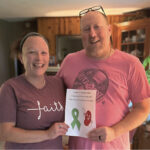
Loretta Claiborne didn’t walk or talk until the age of 4.
Born partially blind with intellectual disabilities in 1953, Claiborne was one of seven children raised in York by a single mother. Public school brought bullying, name-calling, anger and fighting.
The odds were against her. Sports, however, transformed her life.
Claiborne recently delivered the keynote address to about 100 south-central Pennsylvania health care professionals gathered in York for WellSpan Sports Medicine’s annual “Game Changers” conference.
“Loretta, your feet can take you further than your fists.”
That’s the life-changing advice a teenaged Claiborne heard from a teacher.
She took it to heart and started running with her older brother. It was 1966—a different era, before society generally accepted female athletes.
“My sister said I looked crazy running around Penn Park, and my mother said I would hurt my health,” Claiborne said.
She helped raise money to start a girls’ track team at William Penn Senior High School, then was called names like “retard” by teammates due to her disabilities. Claiborne recalls running in the school’s hallways for practice—boys were given priority on the outdoor track and field.
Claiborne’s feet propelled her to the finish line of 26 marathons (including a personal best of 3:03 in the 1982 Boston Marathon) and earned her seven running-related Special Olympics medals, plus three medals for bowling and figure skating.
The longevity and breadth of her career is incredible—she has competed in the Special Olympics since 1970 and also earned a fourth-degree black belt in karate. She talks about her accomplishments in a humble way, as if anyone else in the room could do it all, too.
She recalled many game changers within her own life: her mother, who was the first African American baby born in York Hospital, and her cousin Pierre Ritter, Harrisburg’s first African American police chief.
But she said the biggest game changer was the Special Olympics.
“I look back at the power of what athletics have done for me as a woman,” she said. “Without sports, I’d either be six-feet under or behind bars.”
Today, at the age of 65, the decorated Special Olympics champion is also championing causes.
She’s met four U.S. presidents and the pope. She was on a first-name basis with Special Olympics founder Eunice Kennedy Shriver, and she continues to serve on the Special Olympics International board of directors. She’s testified before Congress and the United Nations.
Her message? She encourages others to see abilities rather than disabilities.
“Everyone should have the right to play sports,” she said. “I’m going to keep pushing for women in sports, for people of disability.”
Really Listen
This June marks the 47th anniversary of Title IX, the civil rights law guaranteeing that women receive the same educational opportunities as men, including athletic ones.
According to the latest data, there are nearly 8 million high school athletes, including 3 million girls. Compare that to 1972’s participation rate—295,000 girls.
College athletes hit an all-time high of nearly 495,000 in 2017-18, and more than 216,000 were women. Back in 1972, only 30,000 were.
Disparities remain, however. According to the NCAA and the Women’s Sports Federation, schools spend less on female athletic programs, there are fewer female coaches than males, and participation among minority females is significantly lower than that of whites.
Conference organizer Dr. Mark Lavallee of WellSpan’s sports medicine program and head team physician for Gettysburg College, notes one of the most obvious changes in females athletes today.
“The acceptable body type has changed from skinny and twiggy to an athletic female build,” he said. “It’s now acceptable for women to have muscles.”
Interestingly, an increase in muscle mass requires more iron to power the body, meaning athletics can actually contribute to iron deficiency, said Dr. Helen Deitch of WellSpan Adolescent & Pediatric Gynecology.
Still, some athletes, both male and female, strive to be thin and lightweight, putting themselves at risk for eating disorders, stress fractures and anemia.
Conference sessions focused on training health care providers to identify and help athletes who may be suffering from medical conditions, as well as abuse, a timely topic given the rampant sexual abuse perpetrated by the USA Gymnastics and Michigan State University physician Larry Nassar.
“People ask why it’s happening in sports, and the thing you have to remember is that sports is often a sacred culture with tremendous power differentials,” said Kathy Bradley, a psychologist who oversees Gettysburg College’s Health & Counseling Center.
She instructed conference attendees on how to phrase questions to female athletes when abuse is suspected. Ashley Moss of Drayer Physical Therapy, Lower Dauphin (LD) High School athletic trainer for 12 years, said Bradley’s advice was valuable.
“In a world where things are always moving so fast, or we are trying to juggle more than one athlete at a time, we can overlook or miss the details we need to hear, to provide the best care,” Moss said. “This conference was a great reminder to slow down, ask the hard questions and really listen to what the athlete is saying.”
She has seen a rise in the number of LD’s female athletes continuing onto the collegiate level. And she cites numerous female role models at LD, including long-time field hockey coach Bea Hallman and current coach Linda Kreiser, as well as Ruth Goepfert, who helped establish LD’s swim team.
“Like Loretta Claiborne, LD has been very lucky with women who have paved the way in athletics,” said Moss.
For more information on the Game Changers in Sports Medicine Conference, visit www.wellspan.org.





